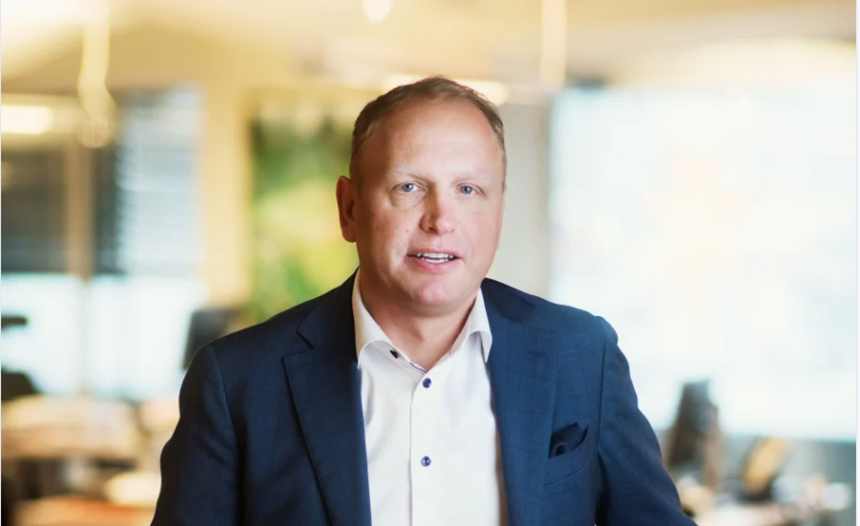Sweden’s green steel gamble: Hype, hope and hidden emissions

“It is no longer whether we can press the green button, but when – everything is in our hands,” said Henrik Henriksson, CEO of Stegra, an emerging Swedish company aiming to transform the steel and iron industry.
Henriksson spoke at a community event in Boden, located 80 km south of the Arctic Circle, where Stegra plans to more than double Sweden’s annual steel production using renewable energy. The company claims its steel will be produced entirely with green energy, a vision that could have significant implications for Sweden and the global steel industry.
The announcement comes amid local uncertainty following the bankruptcy of Northvolt, a large-scale battery manufacturing venture. Some observers remain cautious about Stegra’s bold promises, especially given the project’s lack of full government backing.

Global push for green steel
Efforts to reduce emissions in heavy industries have gained momentum, particularly in sectors like steel, cement, and concrete. Countries are increasingly looking to develop domestic production in response to climate targets and global supply chain vulnerabilities.
Sweden is home to several green steel initiatives. In addition to Stegra, the HYBRIT consortium—formed by SSAB, LKAB, and Vattenfall—has developed hydrogen-based technology that produced its first material in 2021, now under testing by Volvo.
Worldwide, similar projects are underway in China, South Korea, Brazil, and across Europe. Although most remain in pilot phases, the global trend reflects sustained demand for steel and a need for secure, low-emission production.
According to the World Steel Association, global steel production reached 1.84 billion tonnes in 2024. Sweden produced 4 million tonnes, ranking 34th globally.
Steel production methods and emissions
Steel can be produced using several methods:
- Blast Furnace–Basic Oxygen Furnace (BF-BOF): This traditional method emits 2.2 to 2.33 tonnes of CO₂ per tonne of steel.
- Electric Arc Furnace (EAF): Primarily uses recycled steel. Emissions depend on electricity source; renewables can reduce emissions to 0.357 tonnes per tonne of steel.
- Direct Reduced Iron (DRI) with EAF: Considered the greenest method. Hydrogen or natural gas replaces coal in reducing iron ore. Emissions range from 0.7 to 1.2 tonnes of CO₂ per tonne—or up to 3 tonnes if coal is used.
Inside Stegra’s Operations
Founded as H2 Green Steel in 2020 and rebranded as Stegra, the company focuses on three pillars: green hydrogen, green iron, and green steel.
At a 2023 green business summit in Stockholm, Henriksson outlined Stegra’s strategy: to build a full value chain using renewable energy for hydrogen production, which is then used to make iron and steel. He claimed this process would cut emissions by roughly 95% compared to conventional steelmaking.
The Boden facility, covering 270 hectares, includes a steel mill and a nearby 700 MW hydrogen plant. Stegra says production will begin in 2025, though no firm date has been given. The company has signed over 20 purchasing agreements.
Products will be used in industries such as automotive, household goods, and construction.

Debate over environmental claims
Stegra has secured €6.5 billion in funding, including €265 million from the European Commission and €250 million from the EU Innovation Fund. However, it was denied a SEK 1.65 billion grant from Sweden’s Environmental Protection Agency due to projected emissions.
A 2025 study by Per-Olav Johansson (Stockholm School of Economics) and Bengt Kriström (University of Umeå) found Stegra’s claims may be overstated. Their research estimates that once fully operational, the facility could emit 550,000 tonnes of CO₂ annually—placing it among Sweden’s top emitters.
Johansson noted that Stegra lacks the necessary energy contracts to fully power its planned output of 5 million tonnes of steel annually, which would require up to 20 terawatt-hours of electricity. While Stegra has signed agreements with utilities such as Uniper and Axpo, the actual availability of renewable power remains uncertain.
Stegra maintains that the northern Swedish grid, which relies primarily on hydro and wind, ensures renewable energy supply. However, independent verification is limited.
Impact of the Northvolt collapse
Public concern has been heightened by the recent collapse of Northvolt, a battery manufacturer once heralded as a cornerstone of Sweden’s green industrial future. Despite initial success, Northvolt filed for bankruptcy in both the U.S. and Sweden between late 2024 and early 2025.
Both Northvolt and Stegra share a major investor, Vargas. Henriksson has sought to distance Stegra from the failed battery venture, emphasizing a diversified customer base and a different business model.
Economic stakes and outlook
Stegra estimates the plant will produce 2.5 million tonnes of green steel when operational, growing to 5 million by 2030—surpassing Sweden’s 2024 total. This would place Sweden among the top 25 steel producers globally.
The project is expected to generate 1,500 local jobs. Boden municipality is investing approximately SEK 5 billion in supporting infrastructure, including a new railway. Officials acknowledge the financial risk but view the investment as essential to attracting future industry.
Stegra insists that its approach represents a viable path to decarbonizing steel. But given outstanding questions about emissions, transparency, and energy sourcing, some analysts and government bodies remain cautious.
As Sweden pushes to lead in green industrial innovation, the Stegra project could serve as a critical test of how feasible and scalable these technologies truly are.